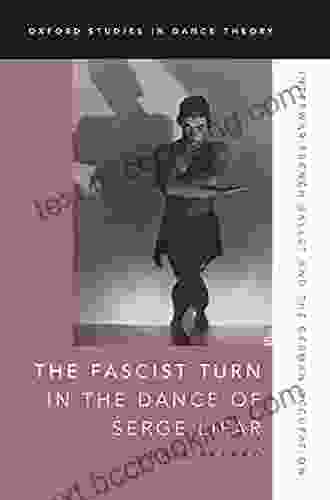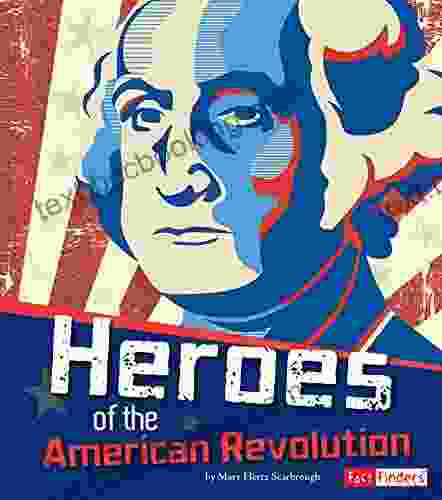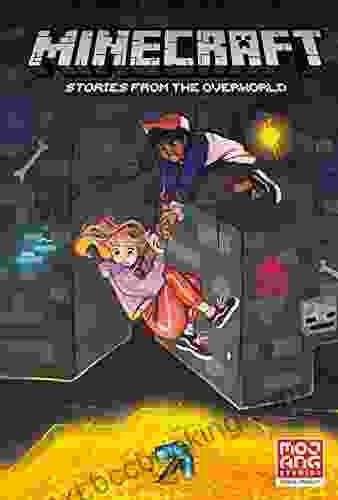The Fascist Turn in the Dance of Serge Lifar: Unraveling the Hidden Messages

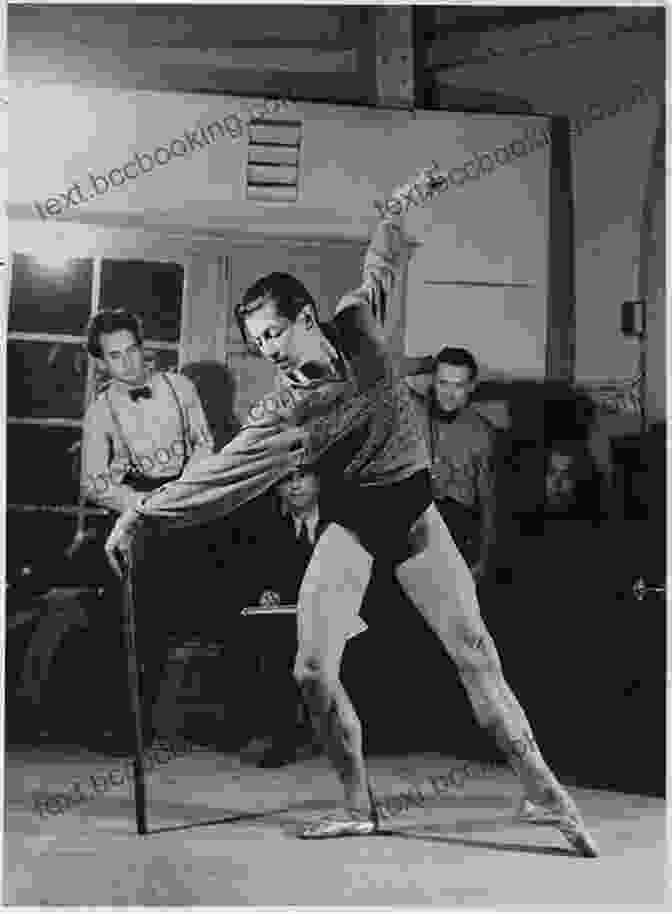
Serge Lifar, a legendary choreographer known for his remarkable contributions to the world of dance, has been a subject of fascination and controversy. His innovative choreography and artistic prowess have earned him a place among the most influential figures in the ballet world. However, in recent years, a different aspect of Lifar's legacy has come under scrutiny: his alleged association with fascism.
Fascist Collaborations and Symbolism
During the Second World War, Lifar found himself in occupied France under the Vichy Regime, a collaborationist government that allied with Nazi Germany. During this period, Lifar's work took on a distinctly different tone. His choreography began to incorporate elements that many critics have interpreted as fascist symbolism.
5 out of 5
| Language | : | English |
| File size | : | 31943 KB |
| Text-to-Speech | : | Enabled |
| Screen Reader | : | Supported |
| Enhanced typesetting | : | Enabled |
| Print length | : | 291 pages |
| Lending | : | Enabled |
In his ballet "Icare," for example, Lifar included a scene where the protagonist, Icarus, escapes from his imprisonment by flying away with swastika-like symbols on his wings. Another ballet, "David Triumphant," featured a character who bore a striking resemblance to Adolf Hitler. Lifar's use of such symbols has led many to question whether he harbored fascist sympathies.
The Ambiguity of Art
The interpretation of Lifar's choreography has been a subject of fierce debate. Some critics argue that the symbols and themes in his work were merely artistic devices, not expressions of political belief. They maintain that Lifar was primarily interested in exploring the aesthetics of dance and that his use of fascist imagery was simply a reflection of the tumultuous times in which he lived.
Others, however, contend that the fascist undertones in Lifar's choreography were intentional and revealed his true beliefs. They point to his collaboration with the Vichy Regime and his admiration for authoritarian figures as evidence of his fascist leanings.
The Dance of Shadows
The controversy surrounding Serge Lifar's work has cast a shadow over his legacy. The question of whether he was a fascist sympathizer or merely an artist influenced by his time continues to divide critics and scholars alike.
What is certain is that Lifar's choreography remains a complex and fascinating body of work that reflects the interplay between art and ideology. His ballets, both beautiful and disturbing, invite us to question the nature of artistic expression and its potential for both inspiration and manipulation.
The Legacy of Serge Lifar
Serge Lifar's legacy is a testament to the enduring power of art to provoke and inspire. His choreography, regardless of its political implications, continues to captivate audiences worldwide. His work reminds us that art is not always a safe haven from the complexities of the world around us and that even the most beautiful creations can carry hidden messages.
The fascist turn in the dance of Serge Lifar is a reminder that art is never truly neutral. Whether consciously or unconsciously, artists are influenced by the political and social climate of their time. Lifar's choreography, with its enigmatic symbolism and ambiguous intentions, serves as a cautionary tale about the potential dangers of mixing art and ideology.
As we continue to explore the complexities of Serge Lifar's legacy, we must remain vigilant in our scrutiny of artistic expression, ensuring that it remains a force for good and not a tool for oppression.
5 out of 5
| Language | : | English |
| File size | : | 31943 KB |
| Text-to-Speech | : | Enabled |
| Screen Reader | : | Supported |
| Enhanced typesetting | : | Enabled |
| Print length | : | 291 pages |
| Lending | : | Enabled |
Do you want to contribute by writing guest posts on this blog?
Please contact us and send us a resume of previous articles that you have written.
 Book
Book Novel
Novel Page
Page Chapter
Chapter Text
Text Story
Story Genre
Genre Reader
Reader Library
Library Paperback
Paperback E-book
E-book Magazine
Magazine Newspaper
Newspaper Paragraph
Paragraph Sentence
Sentence Bookmark
Bookmark Shelf
Shelf Glossary
Glossary Bibliography
Bibliography Foreword
Foreword Preface
Preface Synopsis
Synopsis Annotation
Annotation Footnote
Footnote Manuscript
Manuscript Scroll
Scroll Codex
Codex Tome
Tome Bestseller
Bestseller Classics
Classics Library card
Library card Narrative
Narrative Biography
Biography Autobiography
Autobiography Memoir
Memoir Reference
Reference Encyclopedia
Encyclopedia Mathew Orton
Mathew Orton Loan Le
Loan Le Mark Grabowski
Mark Grabowski Melissa Lavigne Lcsw Rpt
Melissa Lavigne Lcsw Rpt Matthew Parrish
Matthew Parrish Terri Favro
Terri Favro Marina Ermakova
Marina Ermakova Mark Matlock
Mark Matlock Nick Webb
Nick Webb Ralph Moody
Ralph Moody Melanie Hawkins
Melanie Hawkins Mike Humfreville
Mike Humfreville Mark Zondo
Mark Zondo Robert Penn
Robert Penn Marius Kociejowski
Marius Kociejowski Mari Ono
Mari Ono Marian Broida
Marian Broida Matthew Goodman
Matthew Goodman Valia Lind
Valia Lind Rafer Roberts
Rafer Roberts
Light bulbAdvertise smarter! Our strategic ad space ensures maximum exposure. Reserve your spot today!

 Raymond ChandlerThe Ultimate Guide to Navigating The Entertainment Industry For Parents of...
Raymond ChandlerThe Ultimate Guide to Navigating The Entertainment Industry For Parents of... Rodney ParkerFollow ·5.2k
Rodney ParkerFollow ·5.2k Jack PowellFollow ·8.1k
Jack PowellFollow ·8.1k Gabriel BlairFollow ·10k
Gabriel BlairFollow ·10k Ibrahim BlairFollow ·13.4k
Ibrahim BlairFollow ·13.4k Michael ChabonFollow ·2.5k
Michael ChabonFollow ·2.5k Russell MitchellFollow ·4.6k
Russell MitchellFollow ·4.6k Mikhail BulgakovFollow ·14.6k
Mikhail BulgakovFollow ·14.6k Francis TurnerFollow ·4.6k
Francis TurnerFollow ·4.6k

 Larry Reed
Larry ReedGwendy's Final Task: A Thrilling Conclusion to a Timeless...
Prepare to be...
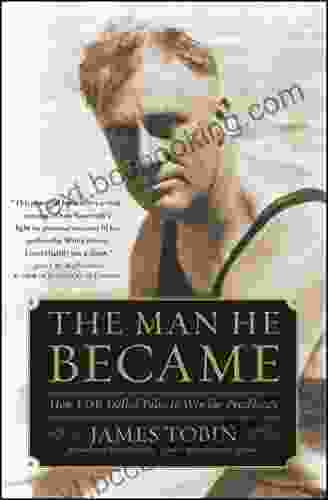
 Victor Turner
Victor TurnerHow FDR Defied Polio to Win the Presidency
Franklin D. Roosevelt is...

 Edwin Cox
Edwin CoxWinner RGS BBC Journey of a Lifetime Award: An Inspiring...
In the heart of the world's...

 Griffin Mitchell
Griffin MitchellEverything You Need to Know, You Learned From Mister...
Mister Rogers' Neighborhood was a beloved...

 Beau Carter
Beau CarterSeasons of Terror: A Spine-Tingling Odyssey into the...
In the realm of horror...
5 out of 5
| Language | : | English |
| File size | : | 31943 KB |
| Text-to-Speech | : | Enabled |
| Screen Reader | : | Supported |
| Enhanced typesetting | : | Enabled |
| Print length | : | 291 pages |
| Lending | : | Enabled |


